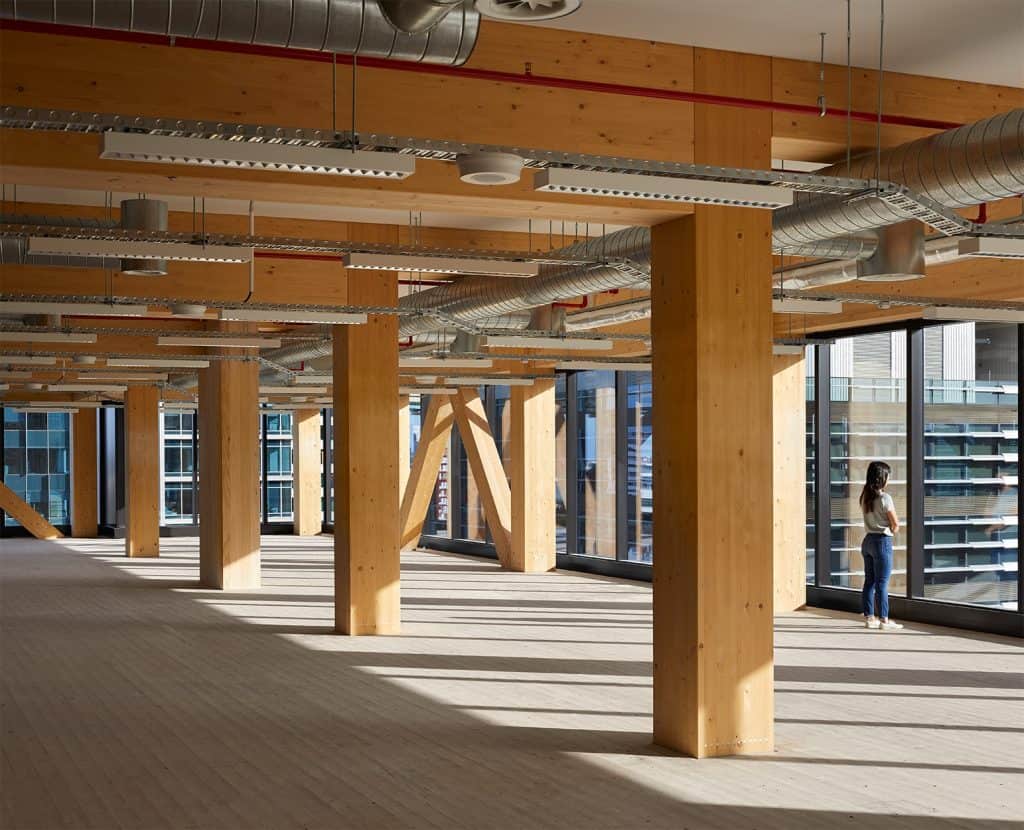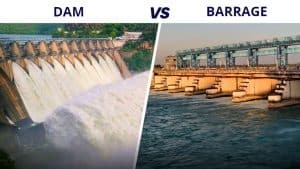
Columns are an integral component of a structure whose failure can result in the collapse of the entire structure. Columns are designed to carry axial loads to enable compression. There are different types of columns that hold a structure together. But before we get into what these different types are, let’s check out what is the definition of a column.
What is a Column?
Columns can be defined as vertical structural members intended to transfer compressive load. In other words, columns are the structural unit that helps in transferring the weight of ceilings to the floor or foundation. As a rule of thumb, the depth of a column should always be greater than thrice its lateral dimension.
Importance of a Column in a Building
- Columns carry different types of loads so they particularly need to be designed to carry axial loads and bend
- Columns are designed to tackle compressive loads
- Snow load or wind load can also cause the bending of the building
- Columns are designed to spread the force of compressive axial load and other additional forces like snow or earthquakes
Materials Used in Constructing a Column
Columns need to have good compressive strength. The most commonly used materials for constructing a column for a building structure are:
Structure of a Column
- Columns rest on a base which is known as a stylobate. It is a stepped platform that holds a column
- The column also sports “fluting” vertical grooves that taper inwards toward the top
- Lastly, on the top part of the column, the orders have their bearings and custom profiles
- The capital concentrates the weight of the ceiling which also served as an aesthetic transition between shaft and entablature.
Orders of Columns
The classical orders are:
- Doric
- Ionic
- Corinthian
- Tuscan Order
- Composite Order
The first three of these orders are Greek and the other two are Roman. The Columns are called classical because they originated from the ancient civilizations of Greece and Rome. Columns were a symbol of prosperity during this time. Ancient Greek architecture inspired those of the Roman Empire. They mimicked the same by developing two orders: The Tuscan order and the composite order.
1. Doric Order
The Doric Order is slightly tapered and based on the proportions of the male body. It has no individual base and sits directly on the stylobate. The column is simple and the entablature is sometimes plain or sculpted. An example of a structure sporting this type of column is the Temple of Hera built in 600 BCE.
2. Ionic Order
The Ionic Order is based on the proportions of the female body. It sports more flutes (vertical grooves) running along the surface. It also has something known as “volutes”: spiral ornamentations on the top of the column.
3. Corinthian Order
This order is considered the most elegant of the five orders. The most distinguishing part of the Column is its eye-catching capital with its carvings of acanthus leaves and four scrolls. The shaft here has twenty-four sharp-edged flutes, while the column is 10 diameters high.
4. The Tuscan Order
This Order is the Roman adaptation of the Doric. With its unfluted shaft and simple capital, the Tuscan Order is plainer than the Doric. The column is seven diameters in height. This Order is also known as the most solid of all.
5. The Composite Order
The Composite Order was a late Roman adaptation of the Corinthians. It is known as the Corinthians because its capital is composed of styles from both Ionic as well as Corinthian decorations. This column is ten diameters high.
17 Different Types of Columns Under 5 Categories
There are five major categories columns can fall under:
1. Based on the shape of the column
- Square or rectangular columns
- Circular columns
- L and T-shaped columns
2. Based on the type of reinforcement used in the column
- Tied columns
- Spiral columns
- Composite columns
3. Based on the type of loading a column can bear
- Axially loaded columns
- Uniaxially eccentrically loaded columns
- Biaxial eccentrically loaded columns
4. Based on the slenderness ratio of the column
- Short columns
- Long columns
5. Based on construction materials used in the column
- Reinforced cement columns
- Steel columns
- Timber columns
- Brick columns
- Block columns
- Stone columns
Let’s Get to The Details!
Types of Columns Based on Shape of The Column
1. Square/Rectangular Column
These types of columns are commonly used to construct heavy structures and buildings. These are also relatively easier to cast and construct as compared to circular ones due to shuttering. These types of columns also do not collapse under pressure when the concrete cast is flowable. These columns are also cost-effective.
2. Circular Column
These columns are used for the elevation and piling of buildings, particularly for aesthetic reasons. It has remarkable resistance to bending with more than four longitudinal steel bars used as reinforcement bars. These types of columns are often utilized as bridge pillars as they are highly resistant to deflection.
3. L and T Shaped Column
These types of columns are often utilized in corners of boundary walls. They have characteristics similar to that of rectangular or square columns. The T-shaped columns are used by considering the requirements of designing the building. Again, these columns are used to construct bridges.
Types of Columns Based on the Type of Reinforcement Used
1. Tied Column
This type of column is built from reinforced concrete. The longitudinal reinforcements in these types of columns are confined in a closely spaced tie. If the ties are placed too far, the Column will undergo shear collapse and barrelling between the ties. Most columns used in buildings are typically tied columns.
2. Spiral Column
These types of columns are reinforced in a close and uniform spiral reinforcement, which is how they get their name. They reinforce the transverse direction to prevent a column from barreling. Generally, they consist of six bars acting as longitudinal reinforcements.
3. Composite Column
This type of column is called so as it combines cast iron or structural steel in the concrete and is reinforced with both, spiral as well as longitudinal reinforcement. Composite columns are in wide usage in trusses to dodge the corrosion of steel. They are extremely stable and strong, with a small cross-section. Additionally, they also exhibit a positive response to fire.
Types of Columns Based On The Type of Loading
Loading is defined as the difference between the super built-up area and the carpet area.
1. Axially Loaded Column
In an axially loaded column, the vertical axial load of the column acts at its center of gravity. It is rarely used in construction as it is not practical to have vertical loads coincide with the center of gravity of the column. These types of columns can be found in multi-story buildings. The interior columns of such buildings that have symmetrical loads from all sides of floor slabs are an example.
2. Uniaxial Eccentrically Loaded Column
In these types of columns, the axis of vertical loads does not cross with the center of gravity of the cross-section in a column. Rather, it eccentrically acts either on the X or Y axis of the column’s cross-section. These columns are used in situations where columns need to be rigidly connected from one of their sides.
3. Biaxial Eccentrically loaded Column
In these types of columns, vertical loads do not overlap with the center of gravity of the column’s cross-section. It neither acts on the X-axis nor the Y-axis. They are primarily used as corner columns. These columns need to have beams that are precisely joined at right angles to each other at the top. These columns are used in special types of construction.
Types of Columns Based on Slenderness Ratio
1. Short Column
Short columns have a ratio of the effective length of the column to the least lateral dimension as 12. These types of columns may collapse if the concrete is crushed, i.e., short columns will fail through pure compression failure.
2. Long Column
Long columns have a ratio of the effective length of the column to the least lateral dimension that is more than 12. These types of columns may bend or buckle and are comparatively weaker than short columns. Thus, long columns are generally avoided in construction.
Types of Columns Based on Construction Materials
1. Reinforced Concrete Column
Columns reinforced with steel are called reinforced concrete columns. These types of columns are largely used in construction. Its concrete will be strong in compression but weak in tension. As a consequence, steel reinforcement is required to increase the column’s tension capacity.
2. Steel Column
As the name suggests, these types of columns are made from steel. Steel columns are a common sight due to their popularity in the steel structure construction realm. It is more flexible, durable, and strong compared to its concrete counterpart. T-Section steel structures are the most commonly used steel structure types in construction.
3. Timber Column
These types of columns are made from timber. They aren’t as popular as they used to be in the 20th century. Timber is most often seen in old buildings due to the easy accessibility of the material at the time. If maintained well, timber is a durable and strong construction material. Timber seasoning can be done to remove moisture from the wood. This will reduce its weight and make it even stronger.
4. Brick Columns
These types of columns are mainly used in load-bearing structures. They play a vital role in sustaining and improving the stability of masonry structures. To some eyes, brick masonry columns are more aesthetically pleasing than concrete ones. These columns have different cross-sections like elliptical, square, rectangular, or round.
5. Block Column
Block columns are constructed from cement concrete blocks or ACC blocks. Their structural weight is comparatively lesser than concrete columns.
6. Stone Column
As suggested by the name, these columns are constructed out of stones and are therefore known as the Stole Columns. Its only purpose is aesthetics.
The Bottom Line
Columns in structures are designed to carry axial load which means they must be designed to tackle compressive forces. Loads like wind, snow or other horizontal forces are factors that bend structures. So to prevent such deformation of buildings, columns are provided. Columns must be able to evenly distribute axial load and other additional loads to maintain the sustainability of the structure. Hope our list of different types of columns lends you an insight into the number of columns out there in the market.
Types of Columns FAQs:
1. Why are columns used in the construction of structures?
Columns are used to reinforce a structure during its construction to spread the compressive axial load and other different forces like wind or snow to the footing in an even manner. Structures need to be sustained evenly in case of an earthquake or other natural forces.
2. What is a column pedestal?
Column pedestals are underlying structures that are used to carry the compression load from a supporting element like a column. Its function is to pass along the load from the column to the footing.
3. What is the most common type of column?
Amongst the different types of columns, the most commonly used material for constructing a column is steel. Steel structures offer higher flexibility and durability than concrete structures. These columns are also light in weight and can be constructed more quickly than concrete columns.
4. Which column is the best?
Rectangular, square, and circular columns are mostly used in construction. Among these three rectangular and square columns are preferred over circular columns.
5. What is a structural column?
Structural columns bear the building’s vertical load. They share the same properties of the architectural columns but have additional properties because of their industry standards and configurations.
6. What is meant by the RCC column?
A reinforced concrete column (RCC) is the structural member of a building that carries the compressive loads and provides reinforcement with the help of an embedded steel frame. These are of two types: slender and short.
7. What is the minimum distance of the column?
The maximum distance at which two columns should ideally be placed is 7.5 m. The minimum distance is 2.5 m.
8. Which column carries more load?
A square column can carry more load than a rectangular column even if it is of equal length and area. This is because rectangular columns buckle on their axis with the minimum






